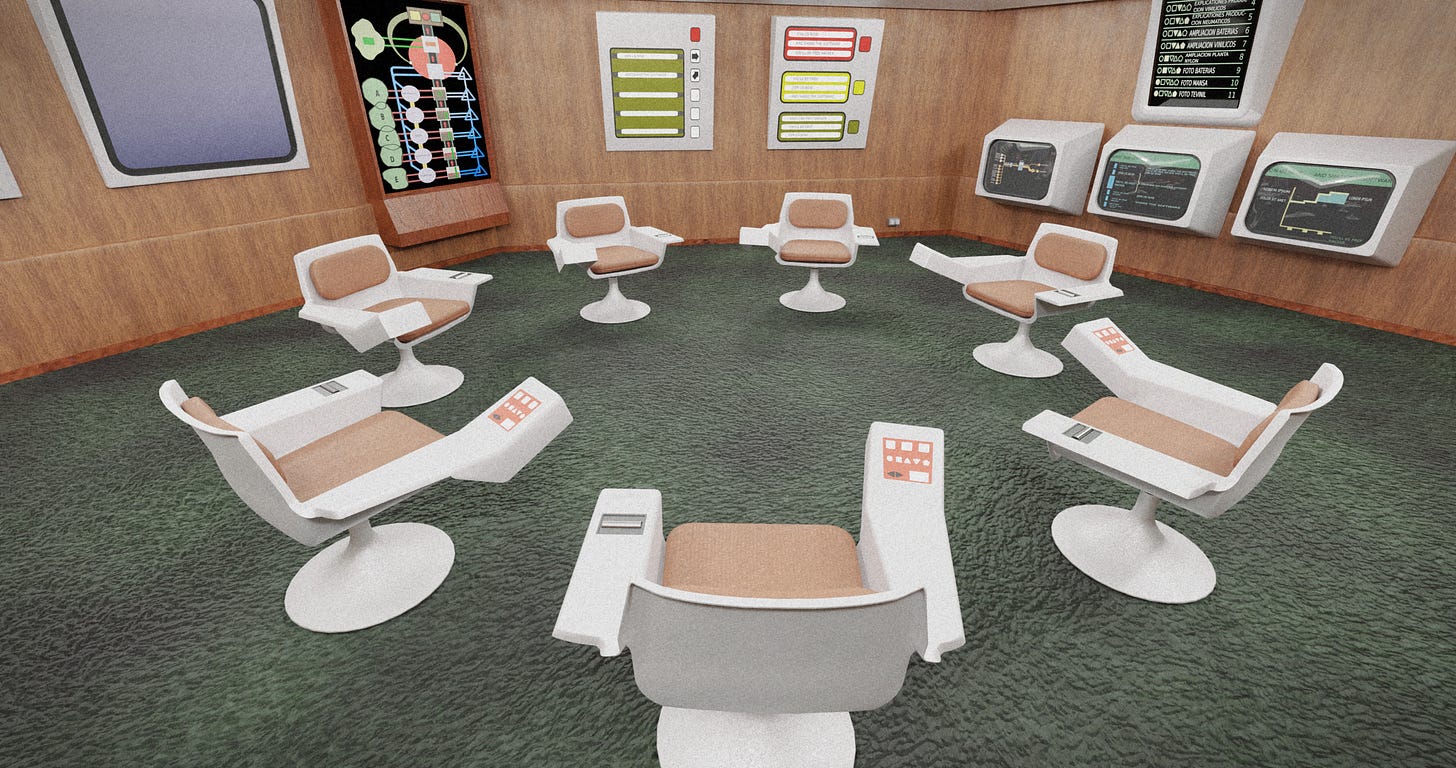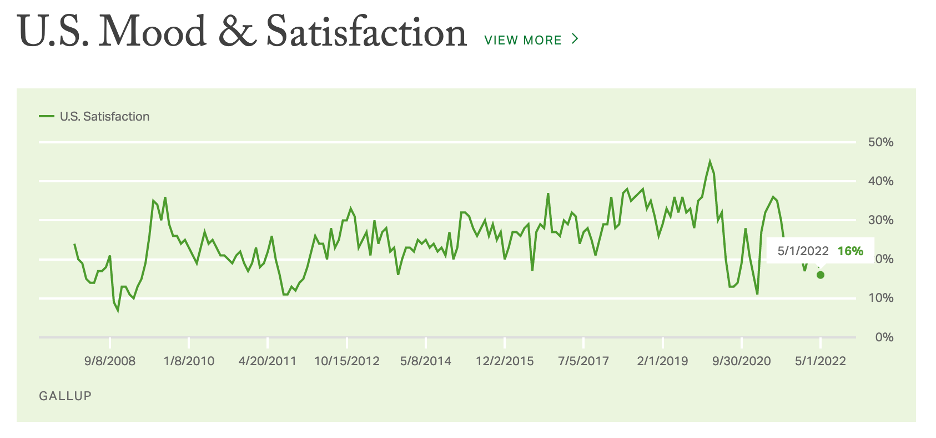Project Cybersyn
In November 1970, Salvador Allende became president of Chile, after winning a narrow plurality in the September election and then being chosen by the Congress. Allende was running for Popular Unity, a left-wing coalition that included communists, socialists, and smaller radical parties. Its economic platform centered on a plan by Chilean economist Pedro Vuskovic to redistribute income, nationalize production, and reform agrarian landholding1.
The Cybersyn story begins with Fernando Flores, a bureaucrat in the Corporación de Fomento de la Producción de Chile (CORFO), the nation’s economic development agency, founded in 1939. Flores was tasked, under new Minister of the Economy Vuskovic’s plan, to improve management of newly nationalized sectors2. Flores, later Allende’s finance minister, had realized that rapid nationalization – which included in the first-year copper mining, food production, and textiles -- would make central planning very difficult. Many current managers were fired and/or left the country, leaving in their place under-qualified government “intervenors,” so Flores contacted British operations-research scientist Stafford Beer (1926—2002)3. The latter wrote on how to balance individual autonomy and community in complex systems by managing them from the bottom up – an attractive model for Allende’s government. The Chileans brought in Beer to implement his ideas in Project Cybersyn (cybernetics + synergy)4.
Stafford Beer had worked in the late 1940s in the War Office’s legendary Operations (‘Ops’) Research, applying war-inspired cybernetics -- computation, feedback systems, and messaging for complex systems -- to manage economic systems and processes under Clement Attlee’s Labour government. After Beer left the army, he served as an executive at United Steel and at International Publishing Corporation and became keen to see socialism succeed in Latin America, working later for governments in Mexico, Uruguay, and Venezuela. The Allende government, and especially Cybersyn, aimed to maximize workers and lower managers’ autonomy while maximizing and monitoring production in the new state-run enterprises. This Chilean “path to socialism”, unlike Soviet or Chinese versions, eschewed central planning – a crucial goal since Chilean bureaucracy lacked technocrats5. Project Cybersyn was to enable technology to manage the country’s economy.
Cybersyn aimed to collect and centralize data from nationalized production units in near-real time, so the government could formulate policy using real-time information. The system had four distinct elements:
· a telex network to transmit information (Cybernet)
· statistical alerting and planning software (Cyberstride)
· an economic simulator (CHECO)
· a control room (Opsroom)
Cybernet, the only part ever fully implemented and realized, was a network of telex machines to transmit data from individual economic assets. It concentrated on the industrial production, by 1973 covering more than fifty factories and about ten industry groups (most notably textiles and chemicals). All these data from Cybernet, and Cyberstride’s recommendations, were summarized in a central, Star Trek-like Opsroom, for decision-makers. CHECO would be the economic simulator, allowing decision-makers to see the long-term effect of their policies.
The great German designer Gui Bonsiepe (born 1934) laid out the futuristic, hexagonal, fibreglass Opsroom with swivel chairs arranged in a circle, surrounding display panels, much of the layout relying on clever visual tricks, as the technology did not yet exist6.
One display panel there was dedicated to a sub-project named CyberFolk, which sought to capture and display public opinion, especially that of workers, to further “bottom--up” decision-making. What Beers termed “algedonic” monitors -- buttons – allowed surveyees to convey life satisfaction. The Cybersyn control room could transmit these data to political leaders. CyberFolk resembled today’s daily YouGov and Gallup polls7.
Cyberstride, the centralized software reacting to real-time data from telex machines, was to alert decision-makers of abnormal inputs or outputs. Chilean programmers and British consultants started setting it up, using bayesian filtering. Cybernet was never linked to Cyberstride, so telex data was manually transcribed to the mainframe that ran Cyberstride.
CHECO was supposed to simulate proposed policies. Beer saw it as an extension to Cyberstride, permitting planners to grasp how industrial production and proposed policies affected the economy over the long term through macroeconomic variables such as commodity prices, inflation, and external investment. The CHECO software was never complete enough, nor the input wide-ranging enough, to make serious estimates.
Project Cybersyn did, however, manage the economy through a strike in 1972 by forty thousand truck drivers, spurred by the nationalistic, anti-socialist opposition. The government, facing rising wages, inflation, and public discontent, did not want to slow industrial production. Using strike-breakers and two hundred vehicles, it harnessed Cybernet to keep key factories supplied and exports flowing – a unique kind of collaboration for that era. Allende’s government survived the strike, but the macroeconomic crisis, public discontent, and military opposition led to Augusto Pinochet’s coup in 1973.
Ultimately, Project Cybersyn was never fully realized, and it monitored only a small portion of the nation’s economy. Although several sectors joined Cybernet, the crucial nationalized copper mines never did, because they did not fall under CORFO’s mandate. And, while the project managed certain situations tactically, broader economic issues persisted, and the Vuskovic plan did not improve the economy after the first year8. Project Cybersyn, by itself, was not able to achieve its goals, and many key components, such as Cyberstride, were never fully implemented.
The military government that followed had little reason to keep a relic of socialist central planning bureaucracy, especially after turning to the Milton Friedman free-market economic policies of the “Chicago Boys” to address economic woes9. Cybersyn’s control room was destroyed shortly after the coup, probably without any thought for its significance. Many ministers and employees involved fled the country, many with the help of Stafford Beer.
The legacy of Project Cybersyn is mixed. Its memory lives on as a footnote in computing history, as a failed precursor to an enterprise internet. Its ideological aims were never fully realized in any country where Beer later worked.
Yet it was a practical, small-scale application of cybernetics, ahead of its time. While economic production had been monitored previously, it would be at least a decade before economic statisticians elsewhere began using the internet to collect and transmit data. For comparison, in 1971, when Beer first arrived in Chile, ARPANET, the U.S. precursor to the internet, had only fifteen nodes, mostly universities10. Cybersyn was also a precursor for private enterprise using real-time economic data to inform business decisions. Flores was, after all, attempting to create management capacity in his country. Finally, Cybersyn reminds us of what we still have not yet accomplished 50 years later.11
The Socialist-Populist Chilean Experience, 1970-1973 provides an overview of the Allende years
Eden Medina’s Cybernetic Revolutionaries is my primary source for this article. Medina’s work on interviewing primary sources remains the best source of primary information on Project Cybersyn.
Beyond Cybernetic Revolutionaries, Medina expands on the ideological underpinning of Project Cybersyn in The Cybernetic Revolution
The Socialist-Populist Chilean Experience, 1970-1973 provides an overview of the macroeconomic conditions in Allende’s Chile. Of particular note is the inflation spiral.





This is a wild read. So much to be learned